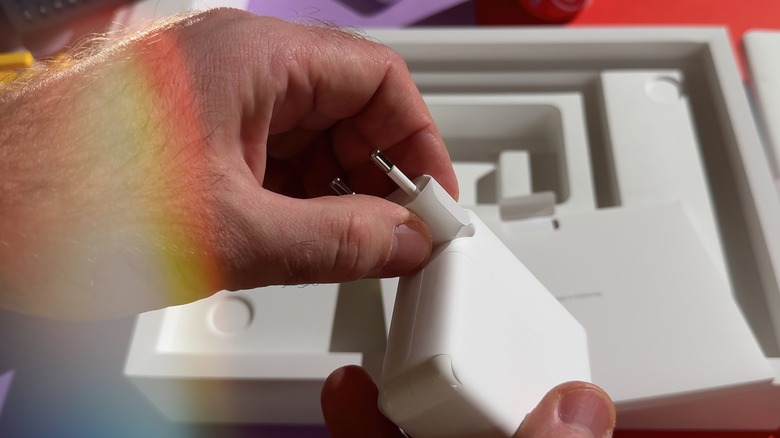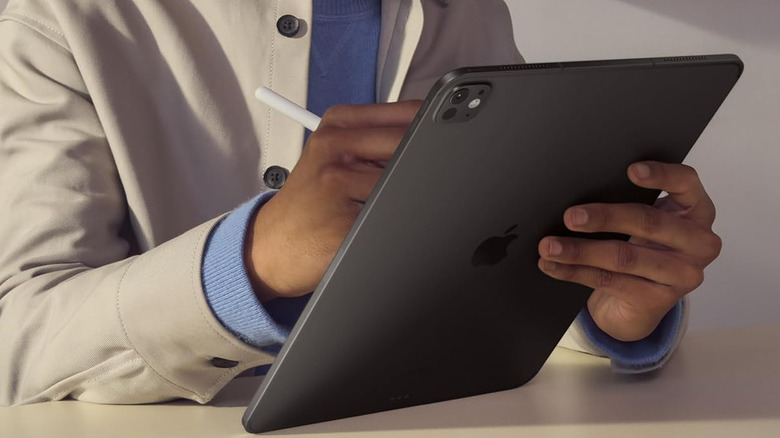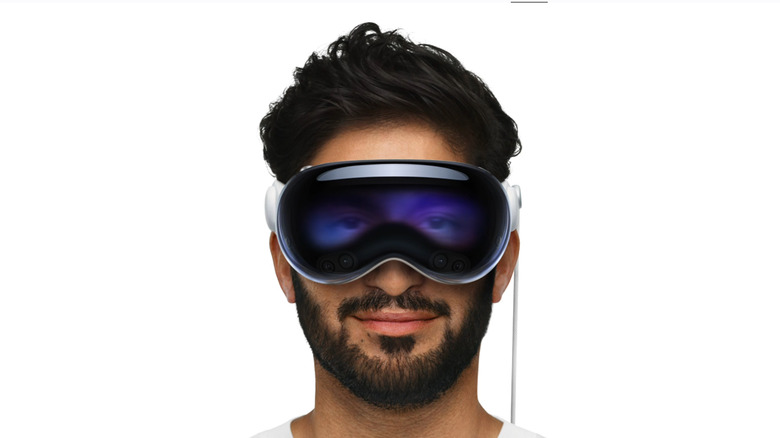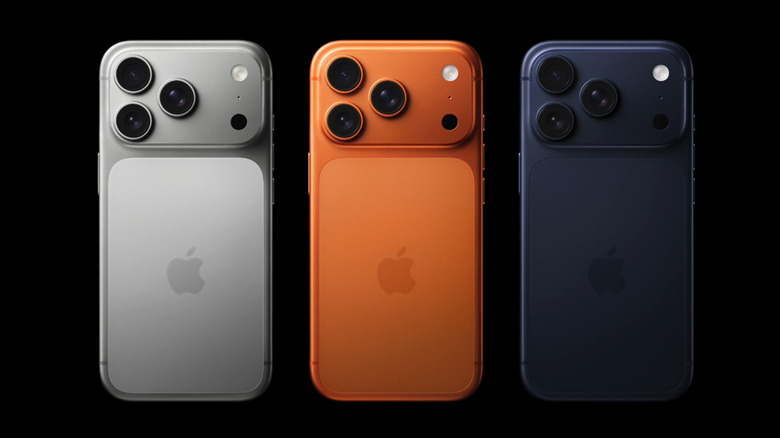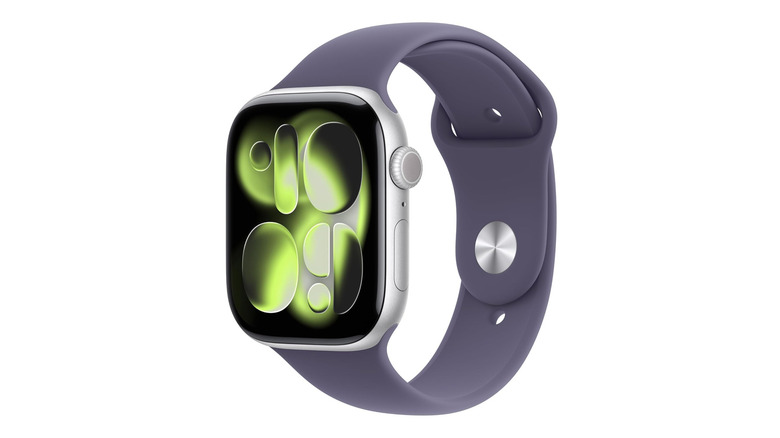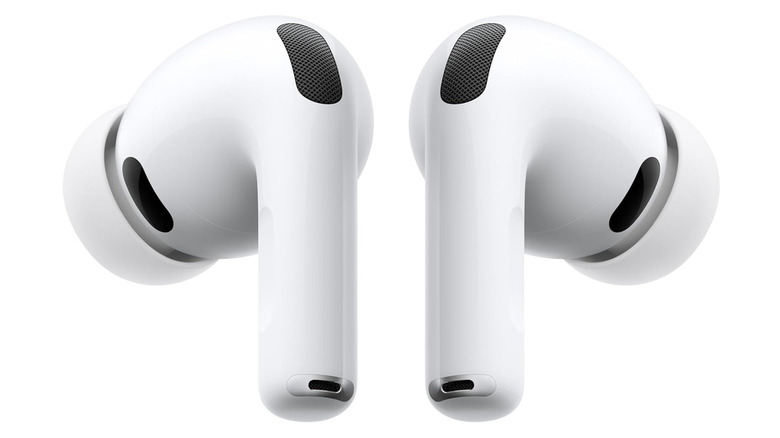Every Apple Product That Comes With A Charger (And The Ones That Don't)
We may receive a commission on purchases made from links.
Apple has always had a knack for stirring conversation with its packaging choices. First, it was the removal of headphones from iPhone boxes, then the charger, and now even cables are up for debate, depending on the product. Some argue these decisions are driven by environmental responsibility, while others see them as a clever way to push accessory sales. The truth? It's a mix of both. And because Apple's product lineup is so vast, buyers are often left scratching their heads: Will this new Apple gadget actually come with a charger in the box or not?
That's exactly what we're breaking down here. From MacBooks that still deliver their iconic power bricks to AirPods that leave you rummaging for an adapter, this is the complete rundown of Apple's charger policy in 2025. Whether you're planning to splurge on the futuristic Vision Pro, stick with an iPad, or grab a pair of AirPods, knowing what to expect in the box can save you both time and money. Let's dive in, product by product.
MacBook: Comes with a charger
When it comes to Apple's laptops, one thing hasn't changed: Every MacBook still comes bundled with a charger. This has been true since the first MacBook launched in 2006, and it continues today across the MacBook Air and MacBook Pro lines. The reason is quite simple: MacBooks pack big batteries that require serious power delivery. Currently, Apple ships either a 30W, 35W, 67W, 96W, or 140W USB-C power adapter, depending on the model and configuration. And yes, they're paired with Apple's braided USB-C to MagSafe 3 cables on most modern MacBooks.
Unlike the iPhone, where Apple insists most buyers already have a charging brick, MacBooks need a dedicated adapter to run at their best. Sure, you can technically charge your MacBook with a phone charger, but the experience is painfully slow. That's why experts agree Apple could never get away with removing the adapter here, especially since professionals depend on fast, reliable charging to power through creative and heavy workloads. Speaking of speed, even the MacBook Air, which ships with a smaller adapter, supports fast charging when paired with Apple's beefier 96W or 140W bricks.
Some users still scratch their heads over Apple's choice to stick with MagSafe instead of a universal USB-C charger. Will that ever change? Unlikely, considering that MagSafe is simply too lucrative. But at the end of the day, the fact that a charger is included at all still feels like a win in 2025.
iPad: Comes with a charger
The iPad has always sat neatly between the iPhone and the MacBook, offering excellent value, and one perk that's stuck around (at least in most regions) is the inclusion of a charger. When the first iPad was launched in 2010, Apple bundled a modest 10W power adapter. As the lineup grew into Air, mini, and Pro variants, those adapters scaled up too, with most modern iPads shipping with a 20W USB-C brick. Apple's reasoning is pretty clear: iPads are popular with families, students, and casual buyers, which includes a good mix of audiences less likely to have a spare high-wattage charger lying around.
Of course, there's a catch. In regions like the EU and U.K., Apple has already stopped bundling chargers with newer iPads, doubling down on its environmental stance. That means what's inside the box depends heavily on where you buy it. The silver lining? For now, most global markets still get a power brick included. And with the entire iPad lineup now standardized on USB-C, compatibility across devices is easier than ever. Still, many analysts suspect it's only a matter of time before Apple pulls the same move it did with the iPhone and ditches chargers across the board. Until then, the iPad remains one of the few Apple products where you can count on unboxing a charger along with the device.
Vision Pro: Comes with a charger
Apple's Vision Pro, launched in 2024, is the company's boldest product since the iPhone. Priced at $3,499 and positioned as the gateway to "spatial computing," it demanded a complete out-of-the-box experience. That's why, unlike some of Apple's other devices, the Vision Pro ships with a dedicated charging setup. The headset relies on an external battery pack that connects via a custom cable, and Apple includes the required power adapter in the box. Given the demands of driving ultra-high-resolution micro-OLED displays, multiple cameras, and advanced sensors, it would be unrealistic to expect users to supply their own solution.
The included adapter isn't just about convenience; it's also about performance. Apple designed the Vision Pro's power system to deliver stable, consistent output, something generic USB-C bricks can't guarantee. The external battery itself is meant to be worn on the go, clipping to a belt or slipping into a pocket, so reliable charging is central to the device's usability. That said, there's another aspect to it too. Similar to the MacBooks, for a product carrying such a premium price tag, excluding the charger would have been unthinkable. In this case, Apple's design choices and consumer expectations were perfectly aligned.
iPhone: No charger included
Since the launch of the iPhone 12 in 2020, Apple no longer includes a power adapter in the box. Instead, buyers only get a cable: Lightning to USB-C back then, and USB-C to USB-C starting with the iPhone 15. Apple's official reasoning for all this is "environmental benefits." The company argued that most users already had compatible chargers, and cutting out the adapter would reduce e-waste and make packaging slimmer. Critics, however, saw this as a clever cost-cutting move, since Apple conveniently sells its own 20W USB-C adapter separately. Regulators in countries like Brazil even fined Apple for selling phones without chargers, but despite the backlash, the policy hasn't budged. The silver lining is that there's no shortage of reliable third-party charging brands for iPhones that perform just as well as Apple's own, if not better.
What makes this decision even more ironic is how the rest of the industry responded. Samsung and Xiaomi openly mocked Apple at first, only to follow in the same footsteps later. For consumers, though, the frustration is very real. Those "old chargers" that Apple says everyone has lying around are often 5W or 10W bricks, which simply don't support the fast-charging speeds modern iPhones are built for. In practice, that means buyers either stick with painfully slow charging or shell out extra for a newer adapter. So while Apple might argue it's saving the planet, many see it as saving profits, with buyers bearing the brunt of the decision.
Apple Watch: No charger included
The Apple Watch, first released in 2015, has always shipped with its signature magnetic charging puck. What it no longer includes is the wall adapter. Up until the Apple Watch Series 6 in 2020, Apple bundled a tiny 5W charger in the box. But starting with the Series 6 and the first SE model, the company quietly removed it, using the same environmental justification it gave when stripping chargers from iPhones. These days, you'll still get the USB-C charging puck, but the actual power brick is up to you to supply. Apple's stated reasoning was environmental sustainability. Since an Apple Watch requires an iPhone to set up, users generally already own a compatible charger that can also be used for the Watch.
Where frustration creeps in, though, is with fast charging. Introduced with the Series 7, it requires not just the right USB-C puck (included) but also a higher-wattage adapter that many buyers don't already own. Without it, charging can feel noticeably slower than Apple's advertised speeds. That leaves many users hunting for an extra brick anyway. For most people, investing in a solid multiport charger from a trusted brand like Anker ends up being the smarter move — it powers the Watch, iPhone, and even an iPad all at once, saving space and cutting cable clutter.
AirPods: No charger included
Apple's AirPods, first launched in 2016, quickly became one of the company's most iconic accessories. The earbuds always ship with a charging case, Lightning or USB-C, depending on the model, and in some versions, wireless charging support as well. What you won't find in the box is a wall adapter. Unlike the iPhone or Apple Watch, where chargers were once included and later phased out, AirPods have never shipped with one. Instead, buyers get the earbuds, the case, and a cable. Apple's justification has been consistent: most customers already own a compatible adapter. And in practice, that's often true, since AirPods buyers almost always have an iPhone charger within reach.
Where the conversation gets interesting is in how charging speeds and methods have evolved. With the newer AirPods Pro and AirPods 4, Apple moved to USB-C, making them compatible with the same fast-charging bricks used for iPhones and iPads. On top of that, one of the most exciting new AirPods 4 features is that the cases can now be topped up with MagSafe chargers or even Apple Watch chargers, giving users far more flexibility than before. This cross-compatibility is arguably Apple's way of softening the blow of not including an adapter, as buyers aren't locked into just one solution. Still, while the ecosystem approach works well for long-time Apple users, first-time buyers may find themselves needing to invest in extra accessories just to get started.
